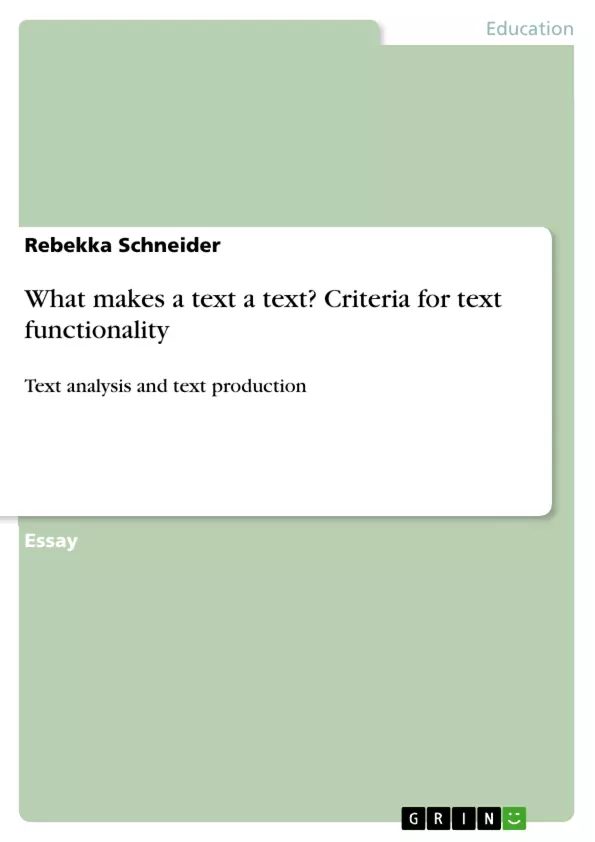A text is more than the bare listing of words in a row or the adding of various sentences randomly to each other. The knowledge of what components are included in a text and in which way these components interact with each other is the key in truly understanding a text, as well as it is essential for being able to fully receive its message.
For many jobs – especially for language related jobs, for example interpreters and translators –the task to develope and enhance textual skills is undeniable crucial for employees.To have the knowledge of text competence includes the cognitive ability to analyze unknown text in order to receive ist useful information and to be able to create a text by oneself.
Therefore, the main question to answer is: “What makes a text a text?“ Even if this might look at first sight very simple to answer, this topic is far more complex than originally expected. In fact, since the 1960s there has been a linguistic science field named “text linguistic“ which deals with this question in greater detail.
Inhaltsverzeichnis (Table of Contents)
- Introduction
- Objective of this study
- Structure of the present study
- Definitions of basic terms
- Text
- Textuality
- Seven standards of textuality
- Cohesion
- Coherence
- Intentionality
- Acceptability
- Informativity
- Situationality
- Intertextuality
- Sample text
- Conclusion
Zielsetzung und Themenschwerpunkte (Objectives and Key Themes)
This study aims to answer the question "What makes a text a text?" by examining the key elements of text functionality. It explores the foundational definitions of "text" and "textuality" and analyzes the seven standards of textuality outlined by Beaugrande and Dressler. The study aims to provide a comprehensive understanding of text functionality and how it relates to communication and social interaction.
- Defining "text" and its essential characteristics
- The concept of "textuality" and its social and communicative constraints
- The seven standards of textuality: cohesion, coherence, intentionality, acceptability, informativity, situationality, and intertextuality
- Analyzing a sample text to illustrate the application of the seven standards
- Understanding the role of text functionality in various forms of communication
Zusammenfassung der Kapitel (Chapter Summaries)
The introduction provides a brief overview of the study's objectives and structure, emphasizing the importance of understanding text functionality for effective communication. Chapter 2 explores the fundamental definitions of "text" and "textuality," highlighting their complexity and multifaceted nature. It introduces the work of Hartmann, the Duden dictionary, and the seven standards of textuality proposed by Beaugrande and Dressler as key concepts to understand text functionality.
Chapter 3 delves into the seven standards of textuality: cohesion, coherence, intentionality, acceptability, informativity, situationality, and intertextuality. The study explores the specific characteristics of each standard and how they contribute to the overall functionality of a text.
Schlüsselwörter (Keywords)
Key concepts explored in this study include text, textuality, text functionality, cohesion, coherence, intentionality, acceptability, informativity, situationality, intertextuality, communication, social interaction, and linguistic analysis. The study aims to provide a comprehensive overview of these concepts and their relevance in understanding the nature and function of text.
- Arbeit zitieren
- Rebekka Schneider (Autor:in), 2019, What makes a text a text? Criteria for text functionality, München, GRIN Verlag, https://www.grin.com/document/925560



